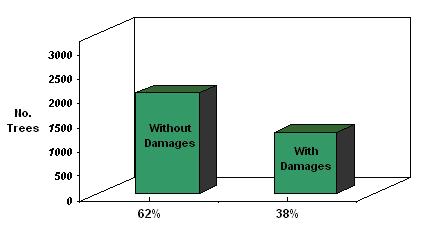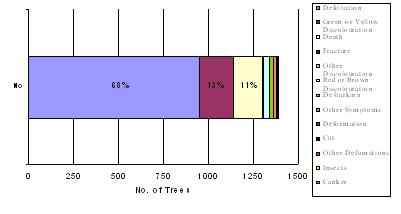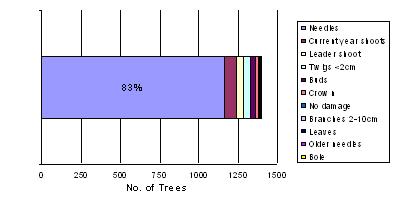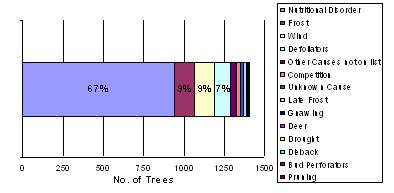Costs
Pilot zone:
(35220 ha)
41 plots
3309 trees
Total Cost €12393.00
Shared Cost €10193.00
Marginal Cost €2200
Total Cost/ha €0.35
These cost include:
| Measure DBH |
| Site Description |
| Record the damages |
| Record the intensity of the damages |
| Identify the damage agent |
| Transects |
| Record the affected part |
| Data processing of the forest health |
| Travel to the plots |
| Time finding & installing the plots |
| Prepare sampling plan |
| Purchase maps of the plots |
| Organise the data collection points |
| Computer & software for forest health |
Results
Figure 2.4.1a: Proportion of Trees with and without damages
Figure 2.4.1b: Type of damages
Figure 2.4.1c: Parts of the tree affected by the damages
Figure 2.4.1d: Main Agents responsible for tree damages
Remarks
Figure 2.4.1a shows that 38% of the trees surveyed were damaged. The other figures (Figs. 2.4.1a-d) present the type of damage, part of the tree affected by the damage and the main agent responsible for the damage. The main type of damage, by a large margin (68%) was defoliation. This could be related to the fact that the forest sites were all post 1988, in the 0-20 age class. Tree damage due to frost and wind can be related to tree age. As the crop matures and closes canopy needle damage due to exposure and frost are less likely. In figure 2.4.1c you can see that 83% of the affected part of the tree was the needles, as would be expected with defoliation. In figure 2.4.1d the main agent responsible for the damages was nutritional disorders which would relate to the high percentage of needle damage and would be an indication of low soil fertility. The other two main agents responsible for the damages were frost and wind, which would be associated with the main affected part (needles) and the age of the trees.
Problems and Improvements
The main problem with identifying forest health in young trees is that the damages observed at the time of field assessment could be transient in nature. Young trees pre-canopy closure, are more susceptible to damage by exposure (wind and frost) which is dependent on annual weather conditions. Therefore damage assessment of the same trees the following year may show complete recovery. This makes it difficult to make an accurate assessment of forest health in young trees and its relationship to sustainability. Therefore the assessment of trees within one age class may present a limited picture of forest health. This does not however affect the reliability of the indicator only a possible limitation of the sampling strategy.
Remarks and Conclusions
This indicator (when assessed in all age-classes) would be very useful for assessing the main forest health issues within a region, pilot zone, country and greatly improves the knowledge of forest health which may not be assessed at such an intensity. Indications from the results show that the forests in the pilot zone are affected by low soil fertility and exposure.

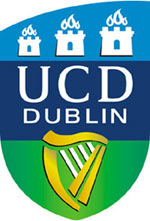
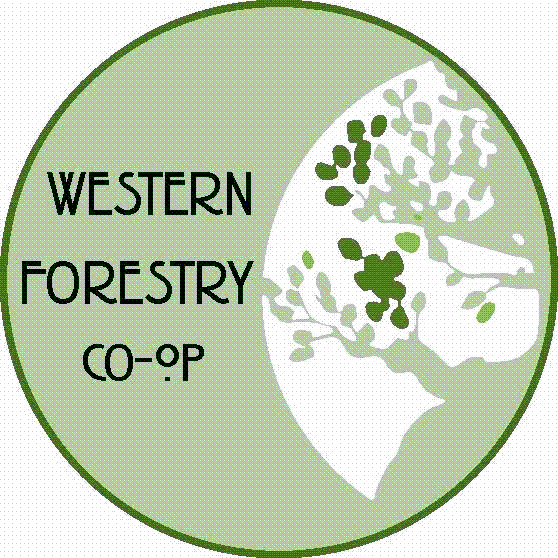
A community initiative ERDF
INTERREG the IIIB Atlantic Area
